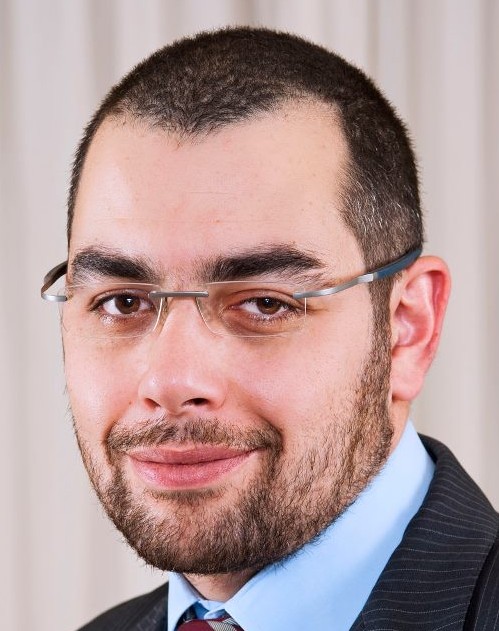ROME: Italy is facing a humanitarian and sanitation crisis on the tiny island of Lampedusa following the arrival of some 15,000 Tunisian boat people amid fears more migrants will flee there following coalition airstrikes on Libya.
Lampedusa is currently housing some 4,800 Tunisians, almost doubling the island’s population of 5,000 and putting a severe strain on its immigrant holding center which has a capacity of just 850.
Italy had been ferrying and airlifting the migrants off the island to be processed at holding centers elsewhere. But those centers are now full, leading to a backlog in Lampedusa — the primary point of arrival for North Africans due to its close proximity to Africa.
The UN refugee agency warned in a statement Monday that some 3,000 of the migrants have been forced to sleep outdoors, "either next to the center or on the docks, without any protection from the rain in increasingly critical hygienic conditions."
Italian Interior Minister Roberto Maroni said measures would be taken in coming days to stem the flow and ease the burden on Lampedusa, including a visit to Tunis Wednesday to press for a resumption of the immigration treaty agreements and border controls that evaporated after the country’s popular revolt in January.
He said 25 Tunisians had arrived in Lampedusa in 2010 — "Now, 14,000 have arrived in two months." Maroni added that an Italian navy ship would be sent to the island to transport migrants to holding centers elsewhere in Italy, and he would be meeting with regional officials to find additional centers.
Maroni also announced compensation measures for the island, whose economy is driven by tourism, as fears mount among residents that the crisis will ruin the approaching high tourist season.
Maroni told a news conference Monday that some 200 Libyans from the country’s east had arrived overnight in Catania, Sicily, marking the first major influx from Libya to Italy since the revolt against Moammar Qaddafi began over a month ago.
But it appeared his information was outdated. Officials from Catania’s port, police, carabinieri and financial police said the migrants were Egyptians, not Libyans — news reports indicating they claimed to be Libyans to obtain refugee status.
Italy has been sending back the vast majority of the 14,918 Tunisians and Egyptians who have arrived at its borders in recent weeks following popular revolts in their home countries, saying they don’t qualify for asylum or refugee status as there are no wars or humanitarian crises in their countries.
The Interior Organization for Migration said it had been informed by Egyptian government sources that the 200 migrants were likely Egyptians, not Libyans, and would as a result be deported, spokeswoman Jemini Pandya said.
Italy has demanded Europe help with the flow of immigrants, saying it shouldn’t be expected to cope alone. It has argued that its active cooperation in the Libya military campaign should compel European partners to share the burden and take some of the immigrants off its hands.
"We want to use this authority that our participation in this operation gives us to ask all the states to share with us the cost of the immigrant flows," Maroni said.
Italy has offered the coalition the use of seven military bases for its aircraft. It also sent six Tornado fighter jets on missions Sunday night.
The anti-immigrant Northern League, a key government partner which has been at the forefront of demands that the EU take in some of the Lampedusa immigrants, submitted a proposal to parliament Monday demanding the European Union take responsibility.
Last week, EU commission president Jose Manuel Barroso met with Premier Silvio Berlusconi and said Italy could count on its "political and financial solidarity."
The UN refugee agency also said Monday that the number of civilians fleeing Libya had decreased since the start of the allied air strikes as they take a "wait and see" approach to the rapidly changing situation.
A spokeswoman for the UN High Commissioner for Refugees said almost 318,000 people have fled to neighboring Egypt, Tunisia, Algeria and Niger since the start of the unrest in February.
Sybella Wilkes said last week, as rebel towns were being pounded by government troops, the stream of civilians crossing into Egypt alone reached 3,000 a day, but the number fell to about 1,500 a day after Friday’s UN Security Council decision to impose a no-fly zone.
"For the Libyans that came out on Friday and Saturday, many of them were doing it in a kind of wait-and-see policy and some decided to go back in," she said.
Elizabeth Tan, a UNHCR official stationed on the Egyptian border, said confidence is growing among Libyans that the air strikes may halt the Libyan government forces’ advance on the rebels’ eastern strongholds. "Today is very quiet," she said in a telephone interview.
A UNHCR official on Libya’s western border with Tunisia, Firas Kayal, said between 1,000 and 1,500 people are arriving daily in Tunisia. Most are foreign nationals, including citizens from other Arab countries, sub-Saharan Africa and Bangladesh, he said.
Wilkes warned that while the exodus may be slowing, the number of civilians displaced in Libya is a growing concern. Government forces have destroyed large numbers of homes, prompting people to seek shelter in schools and other public buildings that lack basic facilities such as mattresses and blankets, she said. –Frank Jordans contributed from Geneva.



